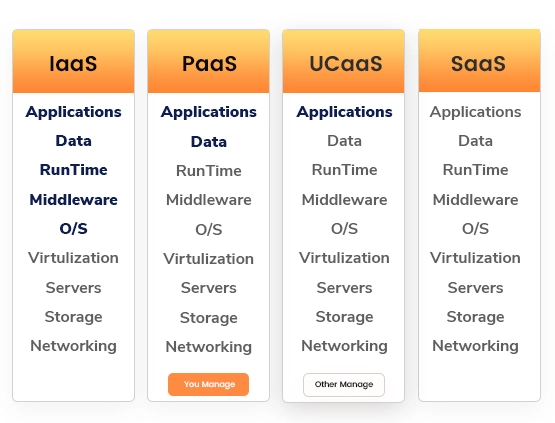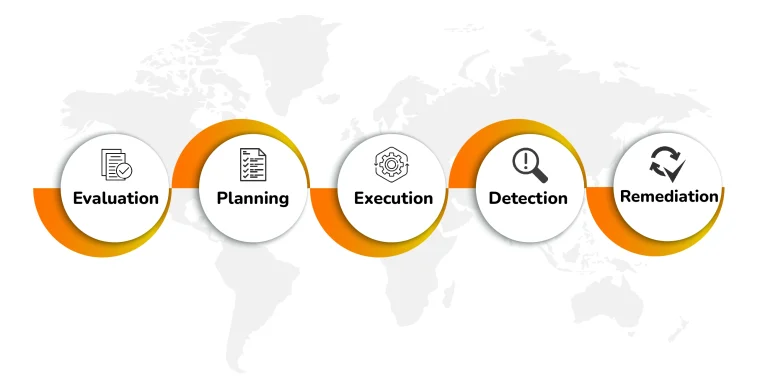Cloud Security Testing
What is Cloud Security Testing?
Cloud Security Testing is the process of evaluating and assessing the security posture of cloud-based systems, applications, and infrastructure to identify vulnerabilities, weaknesses, and potential risks. This testing is crucial for ensuring the confidentiality, integrity, and availability of data and services hosted in the cloud environment.
Cloud Security Testing helps organizations identify security gaps, mitigate risks, and strengthen their overall security posture in the cloud. By proactively assessing and addressing vulnerabilities, organizations can enhance the security, resilience, and trustworthiness of their cloud-based systems and applications.


Featured Services
Key Features
Vulnerability Assessment
Comprehensive scanning and analysis of cloud infrastructure, applications, and services to identify vulnerabilities and weaknesses that could be exploited by attackers.
Penetration Testing
Simulated cyber-attacks to assess the effectiveness of security controls and identify potential avenues for unauthorized access or data breaches.
Compliance Audits
Evaluation of cloud environments against industry standards, regulatory requirements, and best practices to ensure compliance and adherence to security guidelines.
Configuration Management
Review and analysis of cloud configuration settings to ensure adherence to security best practices and minimize the risk of misconfigurations that could lead to security vulnerabilities.
Data Encryption and Privacy
Assessment of encryption mechanisms and data protection measures to safeguard sensitive information from unauthorized access or disclosure.
Identity and Access Management (IAM)
Evaluation of IAM policies and access controls to prevent unauthorized users from gaining privileged access to cloud resources.
Logging and Monitoring
Implementation of robust logging and monitoring solutions to detect and respond to security incidents and anomalous activities within the cloud environment.
Cloud Penetration testing types
Cloud penetration testing involves assessing the security of cloud-based infrastructures, platforms, and services. Various types of penetration testing can be conducted within cloud environments to identify vulnerabilities and potential security risks. Here are some common types of cloud penetration testing

Infrastructure as a Service (IaaS)
- Network Penetration Testing: Assess the security of the cloud provider's network infrastructure, including firewalls, routers, and switches.
- Virtual Machine Penetration Testing: Test the security of virtual machines (VMs) hosted on the cloud provider's infrastructure, including hypervisor security and VM isolation.
- Container Penetration Testing: Evaluate the security of containerized environments, such as Docker or Kubernetes clusters, including container runtime security and orchestration platform security.
Platform as a Service (PaaS)
- Web Application Penetration Testing: Assess the security of cloud-hosted web applications, including testing for common vulnerabilities such as SQL injection, cross-site scripting (XSS), and insecure authentication mechanisms.
- Database Penetration Testing: Evaluate the security of cloud-hosted databases and data storage services, including testing for vulnerabilities such as weak access controls, injection flaws, and data leakage.
Software as a Service (SaaS)
- SaaS Application Penetration Testing: Assess the security of cloud-based software applications, including testing for vulnerabilities in the application logic, authentication mechanisms, and data storage.
- Integration Testing: Evaluate the security of integrations between SaaS applications and other cloud or on-premises systems, including testing for insecure APIs and data transfer mechanisms.
Cloud Security Configuration Review
- Review the configuration settings of cloud services and resources to identify misconfigurations and security weaknesses, such as exposed storage buckets, open network ports, and insecure access controls.
- Assess compliance with cloud security best practices and industry standards, such as the CIS Benchmarks and cloud provider-specific security guidelines.
Red Team Exercises
- Simulate real-world attacks against cloud environments to test detection and response capabilities, as well as the effectiveness of security controls and incident response procedures.
- Conduct targeted attacks to assess the overall security posture of cloud-hosted systems and applications.
Cloud Penetration Testing Methodology and Approach



